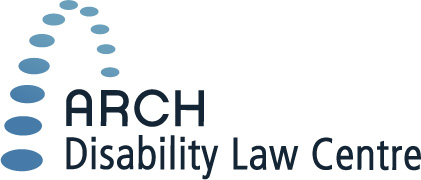Fact Sheet – What is the Accessible Canada Act?
The Accessible Canada Act (ACA) is a law with the goal to remove disability-related barriers across Canada by 2040. The ACA aims to achieve a barrier-free Canada by identifying, addressing and preventing barriers. A barrier is anything that makes the full and equal participation in society difficult for persons with a disability.
Does the ACA impact persons with disabilities living in Ontario?
Yes! The ACA may remove barriers within the federal government and federally regulated private industries that impact persons with disabilities living in Ontario.
For example, the ACA may make it more accessible for persons with disabilities living in Ontario to:
- work for the Government of Canada and other federally-regulated employers;
- receive benefits like Canada Pension Plan – Disability or Employment Insurance;
- apply for Disability Tax Credit and interact with Canada Revenue Agency;
- travel on planes, trains and inter-provincial buses; and
- file a complaint or have their case heard by the Canadian Human Rights Commission, the Canadian Transportation Agency, the Immigration and Refugee Board, the Canadian Radio-television and Telecommunications Commission, or the Social Security Tribunal.
The ACA is a federal law. What does this mean?
The ACA is federal accessibility legislation. This means that it only applies to organizations that are regulated by federal Canadian laws, not provincial and territorial laws. In practice, this means that the ACA may remove barriers that prevent persons with disabilities from:
- travelling on railways, airplanes and inter-provincial buses;
- being employed by or working for the Government of Canada, banks, mining companies, railways, airlines, trucking companies, and other federally-regulated industries or companies;
- accessing federal buildings;
- accessing federal programs and services, like Canada Pension Plan-Disability, Employment Insurance, Registered Disability Savings Plan, Disability Tax Credit, Canada Revenue Agency, Service Canada, the Social Security Tribunal, the Immigration and Refugee Board, the Canadian Human Rights Commission and Tribunal, and others;
- communicating with federally-regulated service providers like railways, airlines, inter-provincial buses, telecommunications companies, and federal programs and services; and
- using information and communication technologies, like television, radio and internet.
What does the ACA do to identify, address and remove barriers?
The ACA created Accessibility Standards Canada to develop accessibility standards.
The ACA gives powers to the Government of Canada, the Canadian Transportation Agency and the Canadian Radio-television and Telecommunications Commission to create new legal requirements for accessibility in federal:
- Transportation;
- Procurement of goods, services and facilities;
- Employment;
- Information and communication technologies;
- Built environment;
- Communication; and
- Design and delivery of programs and services.
Under the ACA, organizations in federal jurisdiction must create accessibility plans. These plans must be developed through consultations with persons with disabilities. Organizations also need to create processes to receive and respond to feedback. They must report on their progress to implement their accessibility plans.
For More Information
ARCH conducted extensive legal analysis and advocacy to strengthen the ACA and as it was known before becoming law, Bill C-81. You can learn more about ARCH’s work at https://archdisabiitylaw.ca/accessibility-laws/accessible-canada-act.
ARCH offers public legal education presentations and free, confidential, summary legal advice about the ACA and other accessibility laws to persons with disabilities in Ontario. Persons with disabilities who live in Ontario can call ARCH for free, confidential, summary legal information and advice. To find out about the type of legal advice ARCH provides and how to book an appointment, go to: https://archdisabilitylaw.ca/services.
You can also contact ARCH by telephone at 1-866-482-2724, teletypewriter service (TTY) at 1-866-482-2728 or by email at intake@arch.clcj.ca.
This information is not intended to be legal advice. Consult a lawyer or legal worker if you need legal advice on a specific matter.
This information is current as of September 2025.
© ARCH Disability Law Centre, 2025
